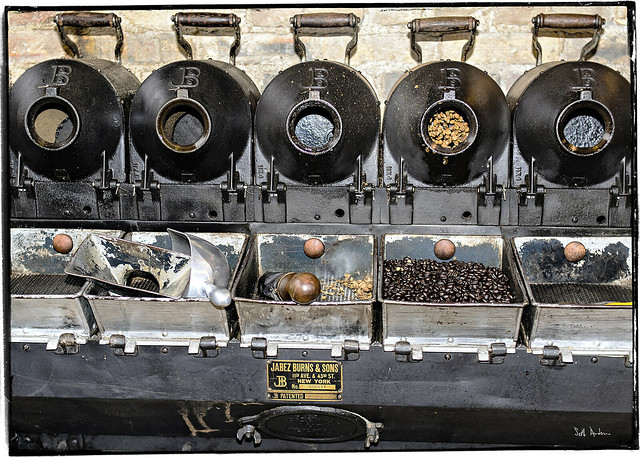
Whole Foods, Amazon and The Pope.
Daniela Galarza reports on one very disappointing change that Amazon has made to Whole Foods, the pending removal of local products from Whole Foods shelves:
For years, Whole Foods employed staffers called foragers who went out into their neighborhoods in search of local artisans at farmers markets or state fairs. There, they found home-made jams and mustards and dressings that they’d buy in bulk.
For mom and pop preservers and picklers, selling their wares at Whole Foods was a boon, and over the past decade, thousands of small brands — many of which still put each label on each jar or package by hand — have come to depend on Whole Foods for the bulk of their business. As part of each store’s local sourcing program, the maker was responsible for stocking their items on Whole Foods’ shelves and could pick a few weekends to set up a table and offer customers a sample. Makers said they were far more likely to sell their items when they were present in the store, answering questions about a product and forging a personal connection while making that sale.
“Whole Foods was always an advocate for the small business. They always wanted to support local artisans,” says Erika Kerekes, founder and owner of Not Ketchup condiments. Not Ketchup was sold at Whole Foods locations in Southern California, near where Kerekes lives, for several years, up until six months ago. (Now it’s sold via its website and on Amazon.)
In September 2017, one month after the acquisition and Mackey’s initial statement, Whole Foods quietly announced it would be discontinuing parts of its local sourcing program. “Instead of allowing brands to frequently pitch their products to individual stores or regions,” the Wall Street Journal reported, “Whole Foods executives in its Austin, Texas, headquarters will choose a higher percentage of the inventory.”
According to the Journal, this year, Whole Foods started charging local makers to offer samples in store. They’re also requiring makers who sell over a certain threshold to pay a percentage fee to the store. “To suddenly not to be able to sell at Whole Foods, or to have to go through the same vetting process as the bigger names,” Kerekes says, “is a challenge, to say the least.” More often than not, small purveyors don’t have the marketing budget to fly out to Whole Foods’ headquarters in Austin, Texas, to present their product for a tasting.
“One of the things they want,” Kerekes says about presenting at the corporate level, “is for you to have a marketing plan for at least the next 12 months. They want to know how much money you’re putting into marketing, merchandising, trade shows, online and television advertising… they want to know how often your item is going to be on sale. But unless they have an investor behind them, small, local brands in their early stages of development just don’t always have this mapped out.”
(click here to continue reading Amazon’s Changes to Whole Foods Mean Empty Shelves, Fewer Local Products – Eater.)
From my perspective, as a long time Whole Foods customer (since 1982, actually), I’m very discouraged by this change. Whole Foods is lumbering towards simply being another corporate grocery chain without much character. Why not retain a little local flavor? Stock mustard by Local Food Folks, carry tomatoes from Mighty Vine, don’t become Kroger (Mariano’s) or Albertsons (Jewel-Osco), don’t morph into yet another giant warehouse of packaged, processed food made by behemoth corporations, the kind of generic store that is exactly the same no matter where you go. Rick Bayless saw the trend lines, and sold his Frontera Foods to ConAgra, but there should be room for small food businesses to flourish.
And what about local spirits and beers? Texas doesn’t allow whiskey or other spirits to be sold in grocery stores, but Illinois does. Will Koval and the myriad of other regional craft distillers currently stocked in Illinois stores lose their distribution because Whole Foods corporate can’t be bothered?
The nearly always empty shelves is another problem, an inventory issue that can be fixed, at least theoretically. Removal of small food brands is a corporate decision made by Amazon, and quite disheartening.

Whole Foods Empty Produce Shelves

No bread for you! at Whole Foods
Slightly more detail from the Washington Post’s Abha Bhattarai:
Whole Foods Markets is placing new limits on how products are sold in its stores and asking suppliers to help pay for the changes, riling some mom-and-pop vendors that have long depended on the grocer for visibility and shelf space.
The changes, outlined in an email recently sent to the company’s suppliers, are intended to save on costs and centralize operations.
…
Previously, Whole Foods allowed suppliers such as Gray to oversee their own merchandise or hire local firms to do so. But under the new rules, Whole Foods is requiring suppliers to work exclusively with Daymon, a Stamford, Conn.-based retail strategy firm, and its subsidiary, SAS Retail Services, to schedule in-store tastings, check inventory on shelves and create displays on their behalf.
…
Suppliers that sell more than $300,000 of goods annually to Whole Foods will be required to discount their products by 3 percent (for groceries) or 5 percent (for health and beauty products) to fund the new program. Local suppliers will also have to pay $110 for each four-hour product demonstration by Daymon, while national suppliers will have to pay $165. (Vendors can also continue to host demonstrations themselves, as long as they pay a scheduling fee of between $10 and $30.) Daymon did not respond to requests for comment.
(click here to continue reading Whole Foods places new limits on suppliers, upsetting some small vendors – The Washington Post.)
































